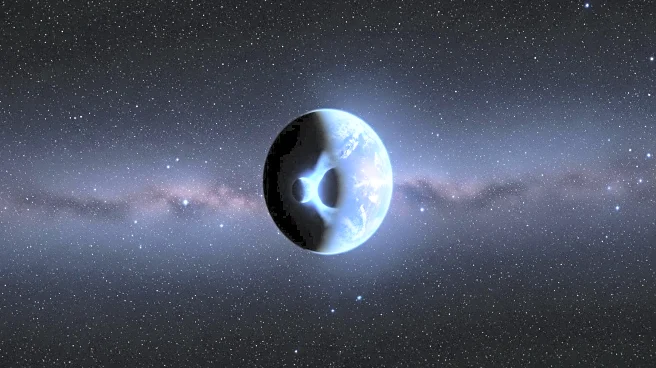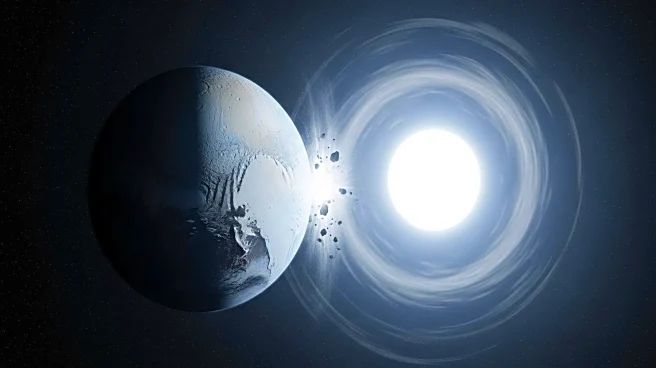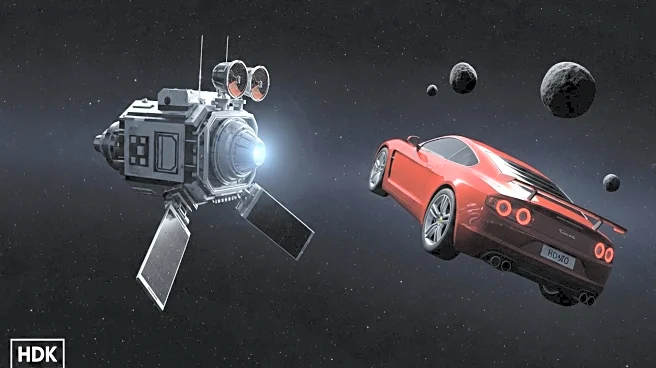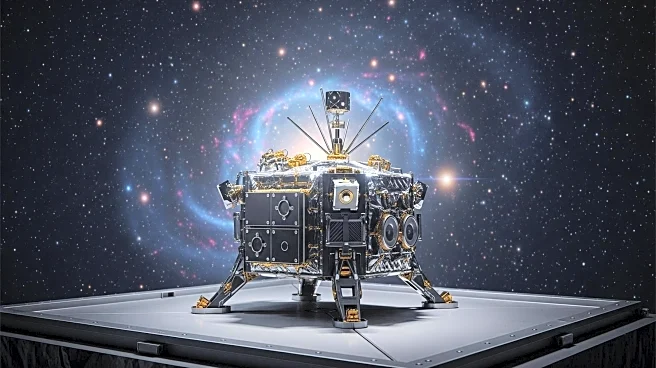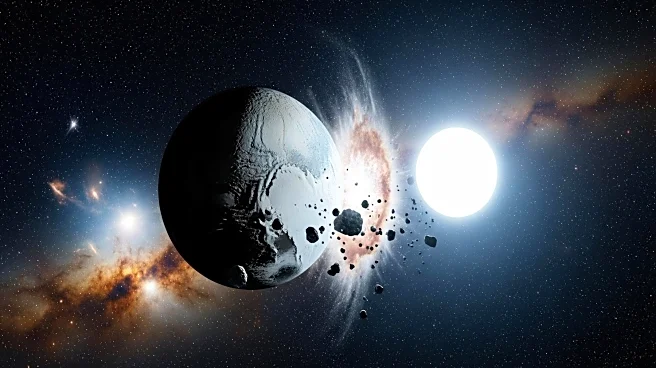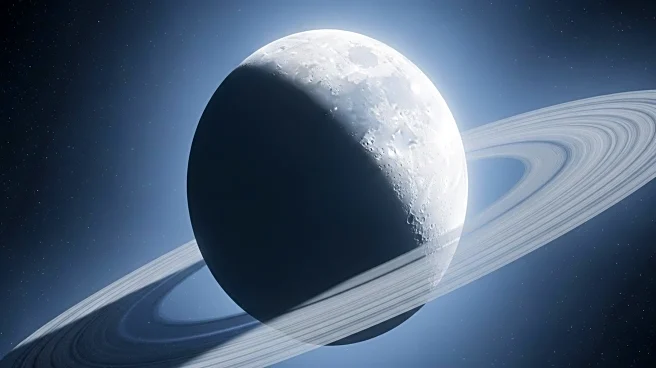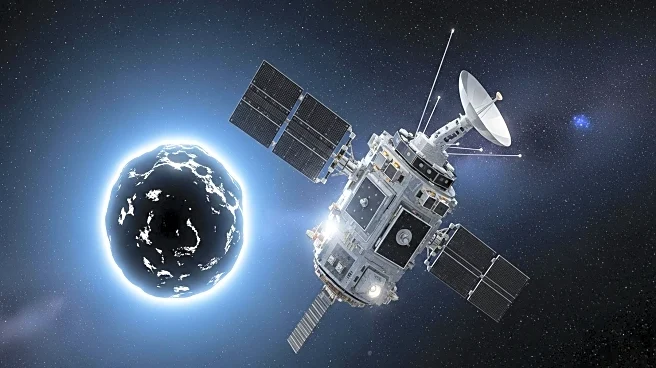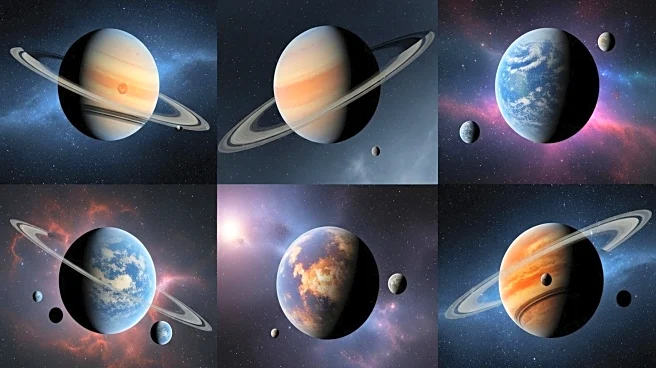What's Happening?
Astronomers at the University of Hawaii have identified a new quasi-moon, designated 2025 PN7, which has been orbiting the sun alongside Earth for approximately 60 years. This small celestial body, estimated to be between 60 and 120 feet in diameter, is not gravitationally bound to Earth like the moon but shares a similar orbital path around the sun. Quasi-moons are a rare class of asteroids that accompany Earth for extended periods before eventually drifting away. The discovery of 2025 PN7 adds to the list of eight known quasi-moons, which are challenging to detect due to their small size and dimness.
Why It's Important?
The discovery of quasi-moons like 2025 PN7 is significant for the scientific community as it provides a unique opportunity to study these celestial bodies over long periods. Unlike typical asteroids that pass by Earth quickly, quasi-moons remain in proximity for decades, allowing for detailed observation and research. This can enhance our understanding of asteroid composition and behavior, which is crucial for planetary defense strategies and future space exploration missions. Additionally, studying quasi-moons can offer insights into the dynamics of the solar system and the gravitational interactions between celestial bodies.
What's Next?
The newly discovered quasi-moon 2025 PN7 is expected to continue its journey alongside Earth until 2083, after which it will likely drift away. During this time, astronomers will have the opportunity to conduct extensive studies on its composition and trajectory. Future missions may aim to explore quasi-moons more closely, potentially using them as stepping stones for deeper space exploration. The ongoing research could also inform the development of technologies for asteroid mining and planetary defense.


